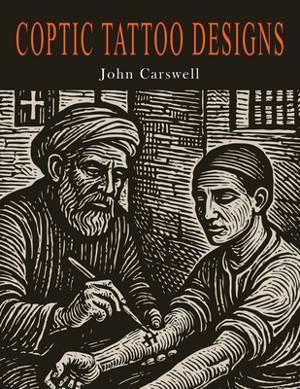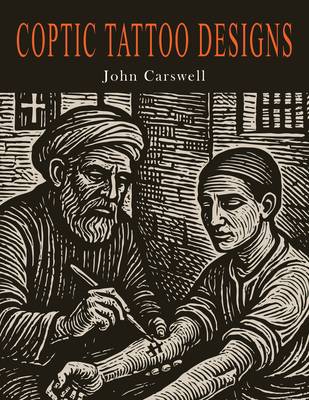
- Afhalen na 1 uur in een winkel met voorraad
- Gratis thuislevering in België vanaf € 30
- Ruim aanbod met 7 miljoen producten
- Afhalen na 1 uur in een winkel met voorraad
- Gratis thuislevering in België vanaf € 30
- Ruim aanbod met 7 miljoen producten
Omschrijving
Originally published in Cairo in 1956 and issued in an expanded edition in London in 1958, Coptic Tattoo Design represents one of the earliest systematic efforts to record and interpret the tattooing practices of Egypt's Coptic Christian community. Long before tattooing became associated with fashion in the West, these markings served as enduring signs of religious devotion, pilgrimage, and communal identity.
This pioneering study preserves a corpus of traditional Coptic tattoo motifs-crosses, saints, Christograms, Marian emblems, and sacred symbols-that had been passed down through generations of tattooists in Egypt and Jerusalem. Many of the designs reproduced here were traced directly from the wooden blocks of the Razzouk family, a dynasty of Christian tattooists whose workshop continues to operate today.
The volume is not merely a catalogue of patterns; it is a cultural document that sheds light on the anthropology of devotion. To bear the cross or sacred image upon one's body was an affirmation of faith, a marker of belonging, and at times a courageous assertion of identity within a complex religious landscape.
Reissued for modern readers, Coptic Tattoo Design remains indispensable for scholars of religious art, students of Christian iconography, anthropologists, and all those interested in the deep cultural roots of tattooing. By uniting art-historical analysis with ethnographic observation, it continues to offer a window into the resilience of the Coptic Orthodox tradition and the persistence of Christian imagery on the body.
Specificaties
Betrokkenen
- Auteur(s):
- Uitgeverij:
Inhoud
- Aantal bladzijden:
- 222
- Taal:
- Engels
Eigenschappen
- Productcode (EAN):
- 9798898780104
- Verschijningsdatum:
- 17/09/2025
- Uitvoering:
- Paperback
- Formaat:
- Trade paperback (VS)
- Afmetingen:
- 216 mm x 279 mm
- Gewicht:
- 526 g

Alleen bij Standaard Boekhandel
Beoordelingen
We publiceren alleen reviews die voldoen aan de voorwaarden voor reviews. Bekijk onze voorwaarden voor reviews.








